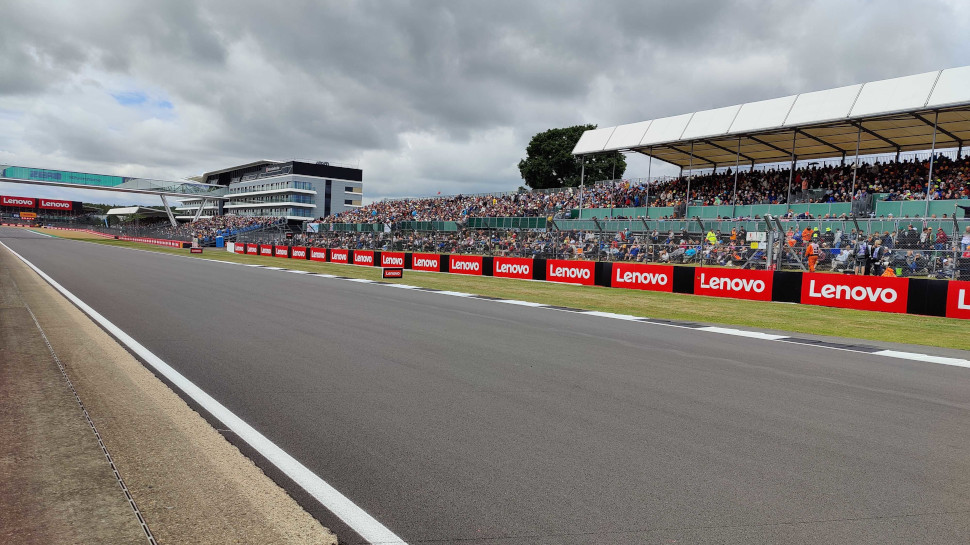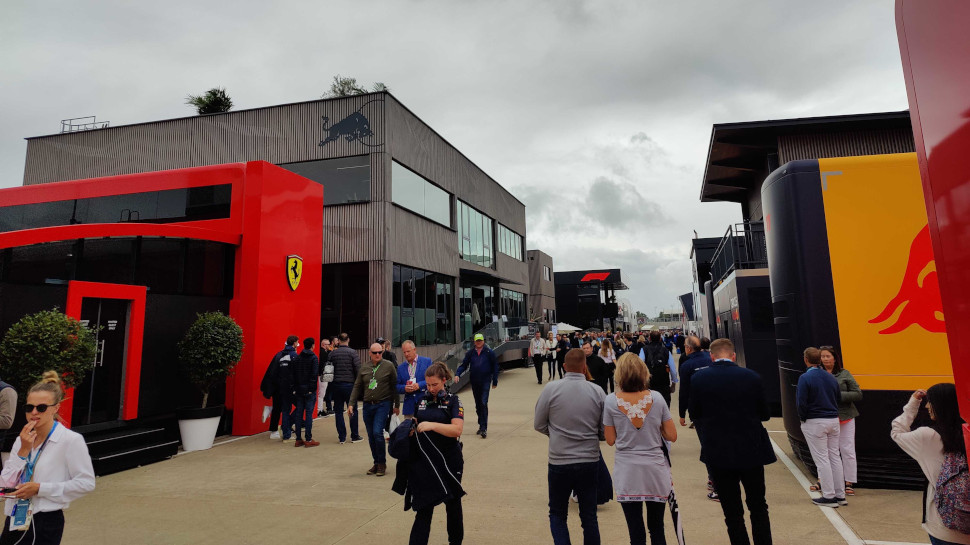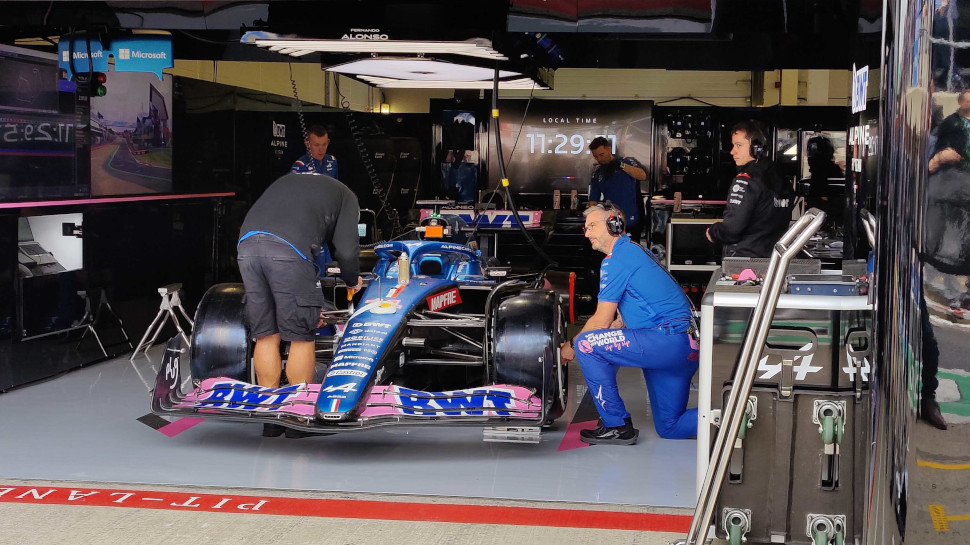The improbable feat of engineering that brings the magic of Formula 1 to your screen
From camera to TV screen in milliseconds

Formula 1 prides itself on its reputation as the world’s most technologically advanced sport. But this is a title that applies equally well outside the context of the cars, to the technology behind the race broadcasts too.
Unlike most live sporting events, which are shot under relatively controlled conditions from only a handful of angles, a single Formula 1 broadcast draws from more than 100 different camera feeds.
Adding to the complexity are the array of audio channels – from track-side, the commentators, and each driver and pit wall - and graphical overlays that display track position and various other data points that help fans digest the action.
The brilliance of a Formula 1 broadcast is that the viewer never has to think about the technology. But behind the scenes is an operation of immense complexity, each part of which is essential to sustaining this illusion of effortlessness.

At the British Grand Prix earlier this year, TechRadar Pro spoke to Dhaval Ponda, VP Media and Entertainment at Tata Communications, the official connectivity partner to Formula 1. The company is responsible for the fiber optic plumbing that carries race footage from track to production center to TV screen in a matter of milliseconds.
Over the span of a multi-year partnership that extends back to 2012, Tata has presided over a transformation in the way F1 is consumed. At the start of the relationship, high-definition (HD) broadcasts were a novelty and the network had a data rate of only 100Mbps, but now, every race is transmitted live in 4K to more than 180 territories worldwide.
In the decade ahead, Tata predicts F1 fans will benefit from another transformation of a similar magnitude.
Sign up to the TechRadar Pro newsletter to get all the top news, opinion, features and guidance your business needs to succeed!
A new model for broadcast
One of the first projects brought to fruition when the partnership between Tata and Formula 1 was resumed earlier this year, after a hiatus at the height of the pandemic, was a major overhaul of the broadcast model.
Previously, the media and technology center where all video and audio feeds were ingested, spliced together and built into a complete product would travel with Formula 1 across the globe, to wherever the racing was taking place.
Although the system worked well enough, it required two complete sets of equipment; when one was in active use at the track, the other would be travelling to the next grand prix in the calendar.
Second, the volume of equipment that needed to be shipped to and fro was enormous, adding significantly to the carbon footprint of a sport whose impact on the environment is already under scrutiny.
With these challenges in mind, Formula 1 tasked Tata with facilitating a switch to a remote broadcast model, whereby much of the production work is offloaded to a permanent UK-based site, while a significantly trimmed-down setup travels between races.

During the 2021 season, Tata conducted trials at four grands prix to ensure the technology could stand up to the test. This year, the remote broadcast system has been deployed at scale.
“The shift to a remote operations center - where live feeds from more than 20 locations globally have to be managed in a low-latency environment, so that production can take place in real-time in London - involved a level of complexity that might usually have taken three years to resolve,” said Ponda. “But this was executed in three to four months.”
“It required a significant ability to deliver at a technology level, but we had to demonstrate a level of consistency that meant we would be able to do this week after week, whether the event was taking place in Australia, Canada or wherever else.”
In a sport like Formula 1, dead air is unacceptable. And with the production team based many thousands of miles away from the most far-flung races, there is no room for error, Ponda explained.
Not only must redundancy be built into the network itself (Tata runs two isolated 10Gb fiber optic cables across every route, in case of a failure), but the on-the-ground team has to operate with military precision too.
The next step for F1
Beyond managing the switch to a remote-first approach to broadcasting, Tata is also focused closely on the next wave of innovation. As a matter of principle, the company attempts to deliver upwards of 15 proofs-of-concept each quarter, across all of its customers.
“We’re constantly looking at what kinds of problems might crop up two or three years down the line for the world of sports broadcasting,” explained Ponda. “Innovation is one of the most important aspects [of our customer relationships].”
A few years ago, it was about asking what it might take to enable a low-latency 4K broadcast and the treatment of live video in the cloud. Over the next horizon, Ponda told us, is 8K video and HDR.
Standing in the way is a number of technical challenges at a hardware, networking, storage and software level. Chief among them, Ponda told us, is the need to move workflows that have typically depended on legacy hardware and satellite solutions into the new cloud-first world.

However, if recent trials undertaken by the English Premier League and Rugby Football Union offer any indication, the first 8K HDR Formula 1 broadcast won’t be all too far away, bringing with it a richer color palette and an even greater level of detail.
Separately, Tata and F1 are acutely aware of changes in the way content is being consumed. The immense popularity of TikTok and rise of short-form video, and developments in the extended reality (XR) space tied to metaverse ambitions, are both on the radar.
“The most important aspect driving these changes is quality of experience for the end user. The daily consumption of video has gone through a significant upswing during the pandemic and the task for sports federations and broadcasters is to cater to that demand,” said Ponda.
“The [Tata-F1 partnership’s] single biggest contribution is that people have better quality of content to consume, in higher volumes. In the end, a better experience is what will drive both engagement and the emotional attachment to the sport that brings people in their hundreds of thousands to the track.”
- Our list of the best business broadband deals

Joel Khalili is the News and Features Editor at TechRadar Pro, covering cybersecurity, data privacy, cloud, AI, blockchain, internet infrastructure, 5G, data storage and computing. He's responsible for curating our news content, as well as commissioning and producing features on the technologies that are transforming the way the world does business.